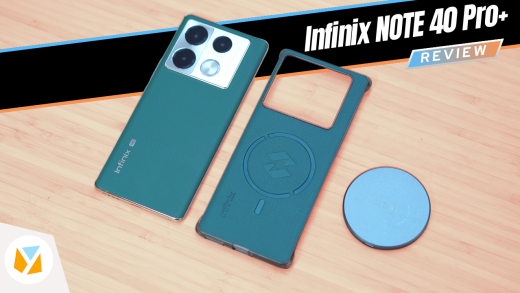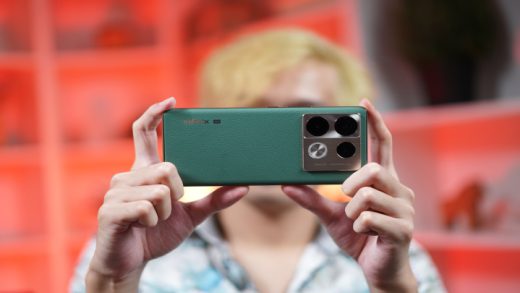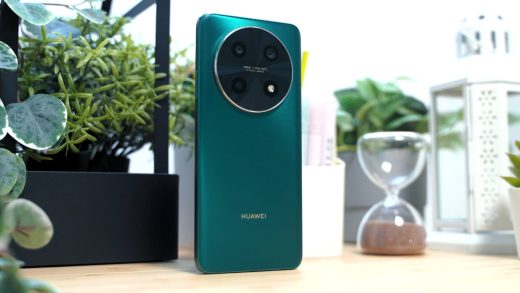The ROG Mothership made quite an impression when ASUS unveiled it months ago. It is a reimagined PC where you can have all the necessary components, including desktop-class hardware, in a compact package. It’s not for everyone, though, and we’ll tell you why.

Table of Contents
Design and Construction
The ROG Mothership is what you would call one badass gaming laptop. The material used in this device is pretty much very similar to the company’s other flagship gaming laptops — aluminum. From the get-go, you’ll see a brushed matte finish all over while the company’s signature ROG logo is placed almost everywhere on the device.

Compared to a desktop PC, it’s portable, but as a laptop, it is bulky and heavy. At the lower back is the laptop’s stand with the ROG logo.

Unlike most laptops, the Mothership doesn’t have a fixed base and houses all the necessary component behind the screen. The keyboard is detachable which can turn the Mothership into some desktop replacement.

It connects to the body using magnets and can be folded, so it doesn’t take a lot of space. When you’re done playing, you can also use it to cover the Mothership’s screen. If you don’t like using the detachable keyboard, don’t worry as it also supports other desktop peripherals.

Looking at the right shows the two power adaptor ports. This part also has the HDMI 2.0, USB 3.1 Type-A, and USB 3.1Type-C Gen 2 ports.

There’s also the SD card slot while at the top is the power button. In between, these components are one of the exhaust vents in the device.


On the left are three USB 3.1 Gen 2 Type-A ports, two 3.5mm jacks for the headphone + microphone and microphone jacks, RJ-45, USB3.1 Gen2 Type-C ports, and another exhaust vent.

On top are two more exhaust vents and the three LED notification lights.

Moving to the removable keyboard, it has a design which looks like the Zephyrus laptops. There’s a space at the top with a copper-colored ROG logo, while below it is the 60% RGB-backlit keys, as well as the virtual numpad/trackpad with physical left and right-click buttons.

You can also personalize the per-key RGB backlighting for different games and load profiles using the Armoury Crate button.


Lastly, the keyboard connects via 2.4GHz wireless connectivity, but you can also tether it via a USB-C cable. One thing we noticed is that the keyboard goes wonky sometimes in wireless mode. There are times that the cursor jumps to a random area or the keys won’t respond.


Upon removing the keyboard, you’ll see that there is a LED lighting below the screen which the speakers reside. The keyboard doesn’t block the speakers as it is elevated when attached.

The ROG Mothership, although portable compared to a desktop, is not that comfortable to lug around. It is hefty and takes more desk space than your usual laptop. Better find a good a table for it as well.
Display and Multimedia
The unit that we got has a 17.3-inch screen with 4K UHD (3840 x 2160) resolution, IPS-level panel, 60Hz, 25ms, 100% Adobe RGB, and G-SYNC. It is suitable for creators that require pixel accuracy. There’s also a Full HD (1920 x 1080) variant with 144Hz, 3ms, and 100% sRGB, which is nicer when playing FPS games.
It’s sharp with excellent color reproduction. However, the screen is not as bright as I wanted as it appears dimmer than other gaming laptops I’ve encountered. Viewing angle is also restricted since you cannot adjust the angle of the stand.

Audio-wise, the ROG Mothership does not disappoint when playing games or listening to music. It has a decent loudness and gives a surround sound.
UI, Apps, and Storage
The ROG Motherships runs on Windows 10 Pro and comes with the usual ROG pre-installed apps such as the ROG Armory Crate, Sonic Studio III, McAfee LiveSafe, and GameVisual.

For storage, ASUS ROG is generous as it equipped the Mothership with three 512GB PCIe Hyperdrive SSDs which is more than enough to store games, videos, music, images, and documents.

We also tested its read and write speeds via CrystalDiskMark, and it didn’t disappoint.

Performance and Benchmarks
Powering this gaming beast is an Intel Core i9-9980HK which means that you can bump the CPU performance by overclocking it. For graphics, it has the NVIDIA RTX 2080 with 8GB GDDR6 VRAM. For the memory, it has a whopping 64GB DDR4 RAM. In other words, an absolute powerhouse. If you don’t believe me, take a look at the benchmark scores below:





Only Crysis 3 in the highest possible settings got an FPS of under 100 (Tekken 7 is capped at 60fps). That alone will remove doubts on the ROG Mothership’s gaming capabilities.
Thermals and Battery Life
Powerful specs require equally powerful thermal management. The ROG Mothership is equipped with four heatsinks lining the top corner of the chassis, eight heat pipes, and anti-dust self-cleaning dual fans. And instead of a standard thermal paste, it uses a liquid metal compound from Thermal Grizzly.
The dual fans run on 12V power, so it spins faster and generates more airflow than conventional fans. And it can get quite noisy with sounds resembling a jet engine spinning up.
I tested the maximum temperature that the CPU and GPU can reach using Prime95 and FurMark while playing games at the same time. The results showed that the Intel Core i9-9980HK could get up to 90°C while the NVIDIA RTX 2080 only heats up to 77°C. Both of them are uncomfortably hot, but it is within the components’ threshold, so there’s no reason to worry.

For battery life, I subjected the Mothership to our video loop test (1080p movie, 50% brightness, 50%sound, airplane mode, w/ earphones) and it got us 4 hours and 20 minutes of playback, which is pretty decent given that this gaming beast that consumes a lot of power.
Conclusion
Overall, the ROG Mothership may not be for everyone, given its PHP 399,995 price tag. But if you’re a creator and a gamer and looking for a very powerful semi-portable gaming computer to invest in, then this is one of the machines we can recommend. It has the top-of-the-line graphics, but it is also paired with the latest processor and crazy-large RAM capacity.
The device is not perfect as there are things that need to be improved on like the flexibility of the screen and the erratic performance of the keyboard when using them wirelessly.

All-in-all, I commend ASUS ROG for pushing the boundaries of a gaming machine’s design. It’s the first of its kind so we’re excited on what they’ll come up with next year.
ASUS ROG Mothership GZ700GX-AD028T specs:
- 17.3-inch 4K UHD (3840 x 2160), IPS-level panel, 60Hz, 25ms, 100% Adobe RGB, G-SYNC
- Intel Core i9-9980HK
- NVIDIA GeForce RTX 2080 (8GB GDDR6 VRAM)
- DDR4 2666MHz SDRAM (Dual channel)
- 64GB RAM
- 1.5TB PCI-E HyperDrive
- Windows 10 Home/Pro
- FHD Webcam
- Wi-Fi 802.11ax 2×2 Gigabit
- Bluetooth 5.0
- 1x 3.5mm audio port
- 1x 3.5mm microphone port
- 1x USB 3.1 Gen 2 Type-C / Thunderbolt 3
- 1x USB 3.1 Gen 2 Type-C / virtual link
- 3x USB 3.1 Gen2 (Type-A)
- 1x USB 3.1 Gen1 (Type-A) / USB charger
- 1x HDMI 2.0
- 1x RJ-45 port
- 1x SD card reader
- 1x Kensington lock
- 4x4W front-facing speakers w/ Smart AMP technology
- ESS Sabre DAC
- Detachable RGB backlit chiclet keyboard
- N-key rollover
- Aura Sync
- VR Ready
- 2x 280W Power Adaptor
- 100-240V AC, 50/60Hz input
- 410 (W) x 320 (D) x 29.9 (H) mm
- 4.7 KG (Estimated)
What I liked:
- Premium design
- Large RAM capacity
- Great CPU and GPU performance
- Four exhaust vents
- Plenty of ports
What I didn’t:
- Dimmer-than-usual display
- Can’t adjust the screen position
- Erratic keyboard and trackpad performance on wireless mode
- Expensive pricing































